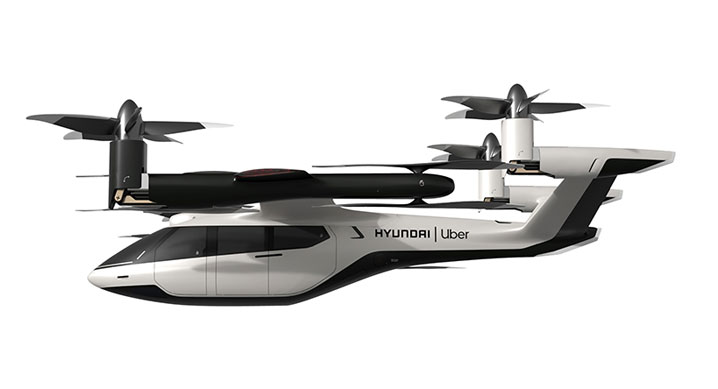
The government on June 4 released the roadmap for Korean urban air mobility (UAM), a project that aims to commercialize flying vehicles by 2025. The photo above is of the S-A1, a personal air vehicle that debuted at this year's Consumer Electronics Show in January in Las Vegas. (Hyundai Motor Company)
By Lee Hana and Lee Jihae
Within the next five years, a flying taxi will be able to reach the Yeouido district of Seoul from Incheon International Airport, a distance of 50 km, in just 20 minutes.
The Ministry of Land, Infrastructure and Transport on June 4 announced at its second meeting on innovation growth strategies a roadmap for Korean urban air mobility (UAM) whose objective is to commercialize flying vehicles within five years.
A UAM vehicle is personal aerial vehicle (PAV) capable of perpendicular takeoffs and landings as a next-generation mode of transportation. Such a vehicle flies at similar altitudes and on the same routes as as a helicopter, but is powered by electricity, emits no carbon and produces significantly less noise.
A PAV is designed to travel 30-50 km in urban areas and can reach in 20 minutes a destination that would take a car an hour.
The government aims to confirm UAM's flight capacity by 2024, start pilot service from 2025 and begin full-scale commercialization from 2030.
The K-UAM Grand Challenge, a joint confirmation project between the public and private sectors, will be launched to arrange by 2024 flight standards suitable for the country's conditions such as the communications environment, weather conditions and the social acceptance of noise.
By 2023, the government plans to wrap up development of an one-person test-only device for air mobility and examine the development of mid- to long-range air (100-400 km) mobility devices and those able to seat two to eight passengers. By 2024, confirmed lines that connect airports and urban areas will be designated and operated.
The commercialization of UAM is expected to reduce time and social cost 70% in transportation in and around the Seoul metropolitan area. By 2040, the global market for this technology is estimated to reach KRW 730 trillion and the domestic market KRW 13 trillion.
Minister of Land, Infrastructure and Transport Kim Hyun-mee said, "The technological development of UAM, which has been depicted only in movies, is coming."
"By 2023, we will push for a special UAM law that puts safety first, and set the institutional foundation to foster the industry to lead the global UAM market worth an estimated KRW 730 trillion."